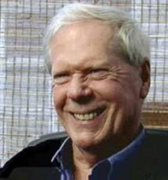How All That Extra Stimulus Money Could Lead to Price Inflation
from Silver Doctors:

The central bank is heavily increasing the quantity of money while economic output contracts—Isn’t that inflationary?
by Thorsten Polleit via Mises
In an effort to “fight” the consequences of the politically orchestrated “lockdown,” the Fed pumps vast amounts of money into the economy. It injects base money into the banking system. It also monetizes outstanding debt and finances the US administration’s deficit spending policy by issuing new money. This not only increases “excess reserves” in the banking system, but also ramps up the money stock in the hands of firms and consumers.
The goal is to keep people liquid, to make up for lost profits and incomes. The Fed’s money creation policy is already showing its first effects. In late April 2020, the money stock M1 grew 26 percent year-on-year, while the money stock M2 was up 15.9 percent against last year. The central bank is heavily increasing the quantity of money while economic output contracts—Isn’t that inflationary? It sure is, and it would be false to think otherwise.

In this context, it is key to understand what inflation really is. Most people these days think that inflation is a rise in consumer goods prices of more than 2 percent per year—a result of what mainstream economics has been teaching generations of students all around the world. However, equating inflation with changes in consumer goods prices is inadequate and highly deceptive for various reasons.
Inflation of consumer goods prices ignores the price inflation of many other goods, most notably assets. If and when the prices of, say, stocks, bonds, and real estate go up, and if and when these price increases are not accompanied by the decline of other goods prices, the purchasing power of money falls. This is what has happened in the last decades: consumer goods prices have remained relatively tame while asset prices have inflated.
Those holding assets were on the winning side when the prices rose, while those holding money and fixed claims denominated in money lost out. The former got richer at the expense of the latter. This became possible, as central banks, in close cooperation with commercial banks, were allowed a monetary policy of churning out ever greater amounts of credit and money, provided at ever lower interest rates.
The economic truth is that it is the increase in the quantity of money that deserves to be termed inflation. Changes in goods prices are just a possible symptom of an increase in the quantity of money. What an increase in the quantity of money really does is to bring about a redistribution of income and wealth among people. Some will gain at the expense of others. And this does not even have to go hand in hand with goods price increases!
Consider a case in which the economy contracts heavily. As demand falls, goods prices are under downward pressure. In an effort to prevent prices from falling, the central bank increases the quantity of money in the hands of firms and consumers. Let us assume that it succeeds in returning demand to its original level, with goods prices remaining unchanged. At first glance, it appears that there is no inflationary impact, because prices have remained constant.
However, what has happened is that the increase in the money supply kept the prices of goods from falling. As a result, it benefits the owners of goods, who are protected from losses in the form of declining goods prices. This is detrimental for everyone who wishes to buy goods—the holders of money—as they are stripped of the opportunity to purchase goods at a lower price. But that’s not all.
At the same time, not all people will obtain an equal share in the increased quantity of money. In fact, some will get more than others. The former are the beneficiaries; the latter miss out. Under the current circumstances, big banks, big companies, and other financial intermediaries (hedge funds, insurance companies, etc.) receive big money, while at the same time small businesses and employees are fobbed off with a much smaller amount.
What is more, some get the new money earlier than others. The first receivers of the new money are the winners: they can purchase goods at current prices. As the new money moves from hand to hand, thereby increasing goods prices, the late receivers are the losers in the game: they can only purchase goods at higher prices. That said, a policy of expanding the quantity of money undeniably causes income and wealth inequality.
In the current environment, there is mass unemployment in the US, which should put wages under downward pressure. What is more, commodity prices have fallen sharply, in particular oil prices, dampening measures of consumer goods price inflation. However, the quantity of money has increased sharply, largely due to the fact that the Fed is effectively sending newly created money to bank-held deposits.
Loading...



